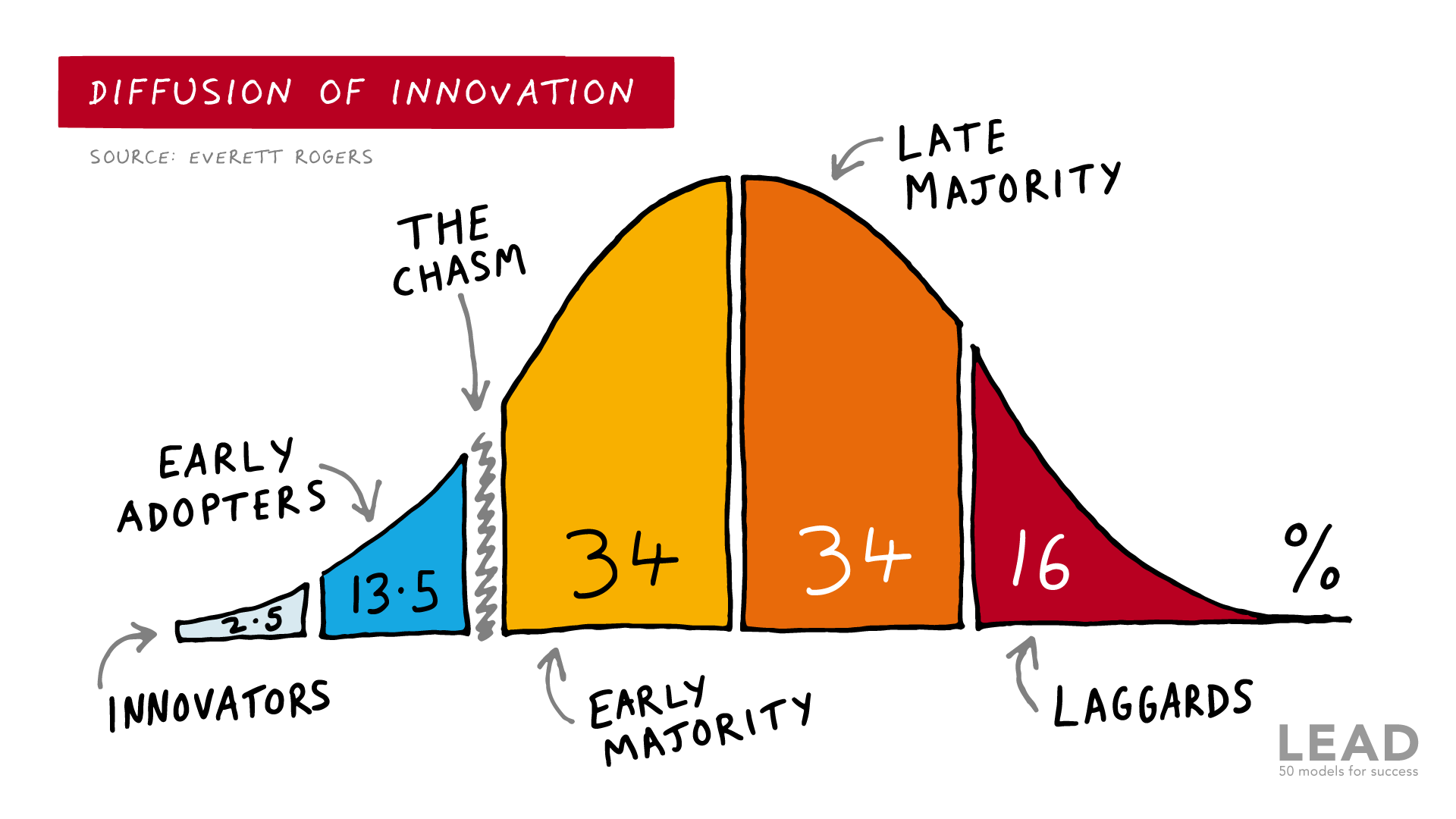Blogpost #8
The Diffusion of Innovation Theory is the explanation for how ideas and new technologies spread. The theory was developed by Everett Rogers, and popularized by his book Diffusion of Innovation. The theory explains how new innovations, in their times, are communicated, accepted, and eventually adopted by different groups or individuals, while also going into detail about what things may influence the process, such as compatibility with values and practices. One technology that can be perceived through the Diffusion of Innovation lens, is the Telegram.
Around the 1830s to 1840s, the Telegram was invented by Samuel Morse. The telegram, or Electrical Telegraph, was a point to point text message system that would send messages as a series of dial tones over electric-magnetic signals through wires stretching between two points, known as Telegraph Offices. The idea of instantaneous messages being sent of long distance made it quick to pick up in its early stages, not just for use in common communication, but also, military use. What took a horse days of travel, or a train hours, would be done instantly in a few presses of a button. Now, the concept was grand, but it took a lot of time to set up, which led to a lot of slow adopters. But as time passed, and the telegram was developed, it quickly saw popularity. Soon, the telegram turned to the telephone, and soon after that, we began seeing wireless forms of communication. What made the telegram so easily adopted and popularized was the road it paved for innovating long distance communications.

:max_bytes(150000):strip_icc()/Components_of_the_electromechanical_telegraph_network._Proce_Wellcome_V0025510-a39ea4c848c64c6e875cbde229f658e2.jpg)
Comments
Post a Comment